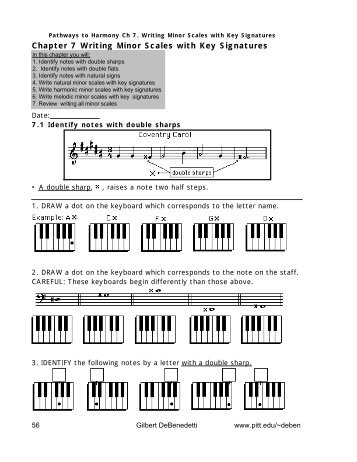

Your definitions work for the major scales and their related modes, but they don't work for all the minor scales/modes, and they won't work for any of the other dozens of scales used in music.įor diatonic major and minor scales, A B C D E F G will always be the (ascending) order, without regard to key signature or numbers of sharps and flats (or steps). The D harmonic minor is a perfect example: it has both Bb and C#. No combining flats and sharps: A,B♭,C#,etc. Some theorists put additional restrictions on what constitutes a diatonic scale, but only one of each letter is a feature under any definition of diatonic. The scales that do conform to no repeated or skipped notes are diatonic scales, which literally means "through the tones". Pentatonic scales are common, and in either the major or minor form they'll skip two letters. The blues scale, the chromatic scale, the diminished scale (in either WH or HW form) are just a few examples. Scales can have more than one of a letter. So the notes are always going to be in order, and since we use an alphabet for the names of pitches, a scale must have the notes in alphabetical order.īut you're mistaken on the other details: The word "scale" literally means "ladder" or "climb" - it's from the Latin word scala. Music theory is very much like this, where you learn a general concept, sometimes thinking of it as a rule, then you learn how that concept or rule is not always accurate or applicable.

Eventually, you learn/teach that this is not entirely the case and learn the exceptions. These will all follow the rules you suggested. So generally speaking, if you are learning or teaching scales, it's good to start with the major and minor scale and introduce their modes. We could also consider the chromatic scale but that tends not to be considered in these types of conversations.

Then we have the case of the Harmonic and Melodic Minor scales, where you can end up with mixed sharps and flats.

These octatonic scales also require the use of both sharps and flats a lot times. There are also octatonic scales, which have 8 notes, and therefore require repeating a letter name. The whole tone scale only has six notes, so that will also be missing a note. However, we can quickly find common examples of scales that skip notes, such as a pentatonic scale, where there are only 5 notes, so it wouldn't be possible to use all 7 unique letter names. We include an electro acoustic repertoire from XX and XXI centuries.This is not always the case but would be the case for the most commonly used scales, such as major, minor, and all the standard modes. For such reason, we must raise the awareness on the aesthetic techniques and thoughts related to the creative processes on electro acoustic composing. In this course we also enter into a dialectic process through the analysis, discussion and confrontation with the student and his/her thought, thus widening the perspectives of aesthetic understanding. Likewise, we will apply elements of approach to languages and composing techniques of the XX century in a practical manner, aiming to conducting the concepts on a creative and personalized fashion, open to proposals given by the student but, with strict technical and composition related patterns bearing in mind the electro acoustic mean. In this course, the student will conduct at least 2 projects on compositions in genres complementary to each sub-area, in this case students of composition (Acoustic-instrumental) 1-4, the complementary genre is electro acoustic and therefore, the projects, exercises and topics to be dealt with must me focused from and towards the problem of electro acoustic composition.


 0 kommentar(er)
0 kommentar(er)
